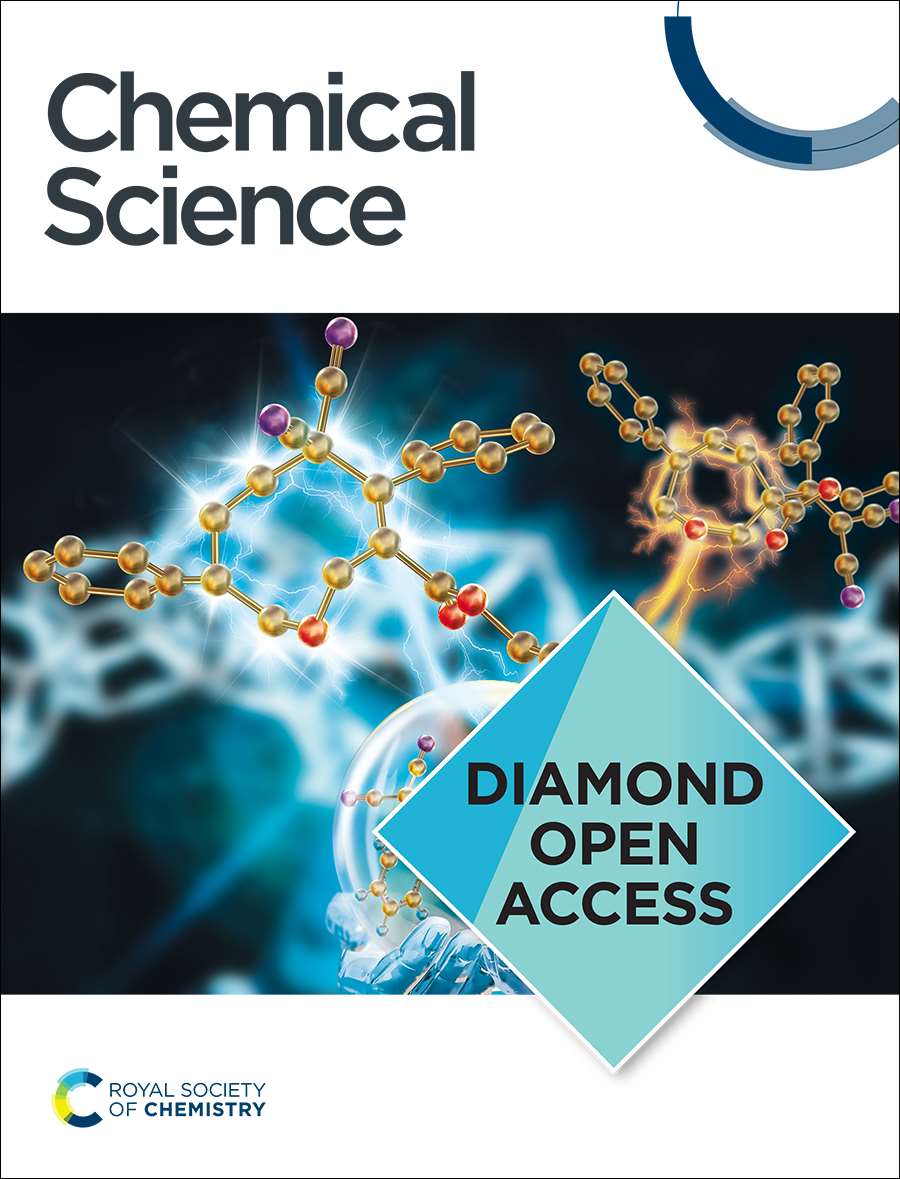Tunable structural rearrangement in Cu cluster assemblies through linker and solvent alterations
IF 7.6
1区 化学
Q1 CHEMISTRY, MULTIDISCIPLINARY
引用次数: 0
Abstract
The scarcity of approaches to assembling copper nanoclusters (Cu NCs) has restricted advancements in Cu NCs research, largely due to stability challenges of the individual NCs. By utilizing the structural adaptability of Cu NCs, we systematically investigate how variations in organic linkers and solvents affect the cluster node size, shape, and their assembling dimensionality. Here, we introduce a facile, one-pot synthesis method for obtaining a range of crystalline Cu cluster-assembled materials (CAMs) through a liquid-liquid interfacial crystallization technique. Our approach demonstrates that the electronic environment of linker molecules plays a crucial role in constructing the geometry of cluster nodes and the overall dimensionality of the framework. Solvent effects further influence the electronic environment of linkers, leading to tunable rearrangements in cluster node size and geometry. Additionally, coordination sites of the linker molecules and architectural properties significantly affect the overall dimensionality of the frameworks. Furthermore, correlations between solid-state photophysical properties and structural architecture expand the scope of this study, introducing the potential for tunable optical properties. We anticipate that this work will not only open avenues for designing novel Cu CAMs but also guide future research toward Cu-based materials with customizable optical features.通过连接剂和溶剂的改变,Cu簇组装中的可调结构重排
组装铜纳米簇(Cu NCs)方法的缺乏限制了Cu NCs研究的进展,这主要是由于单个NCs的稳定性挑战。通过利用Cu nc的结构适应性,我们系统地研究了有机连接剂和溶剂的变化如何影响簇节点的大小、形状和它们的组装维度。在这里,我们介绍了一种简单的一锅合成方法,通过液-液界面结晶技术获得一系列结晶铜簇组装材料(CAMs)。我们的方法表明,连接分子的电子环境在构建簇节点的几何形状和框架的总体维度方面起着至关重要的作用。溶剂效应进一步影响连接体的电子环境,导致簇节点大小和几何形状的可调重排。此外,连接分子的配位位置和结构性质显著影响框架的总体维数。此外,固态光物理性质和结构结构之间的相关性扩大了本研究的范围,引入了可调光学性质的潜力。我们预计这项工作不仅将为设计新颖的Cu cam开辟道路,而且还将指导未来对具有可定制光学特性的Cu基材料的研究。
本文章由计算机程序翻译,如有差异,请以英文原文为准。
求助全文
约1分钟内获得全文
求助全文
来源期刊

Chemical Science
CHEMISTRY, MULTIDISCIPLINARY-
CiteScore
14.40
自引率
4.80%
发文量
1352
审稿时长
2.1 months
期刊介绍:
Chemical Science is a journal that encompasses various disciplines within the chemical sciences. Its scope includes publishing ground-breaking research with significant implications for its respective field, as well as appealing to a wider audience in related areas. To be considered for publication, articles must showcase innovative and original advances in their field of study and be presented in a manner that is understandable to scientists from diverse backgrounds. However, the journal generally does not publish highly specialized research.
 求助内容:
求助内容: 应助结果提醒方式:
应助结果提醒方式:


